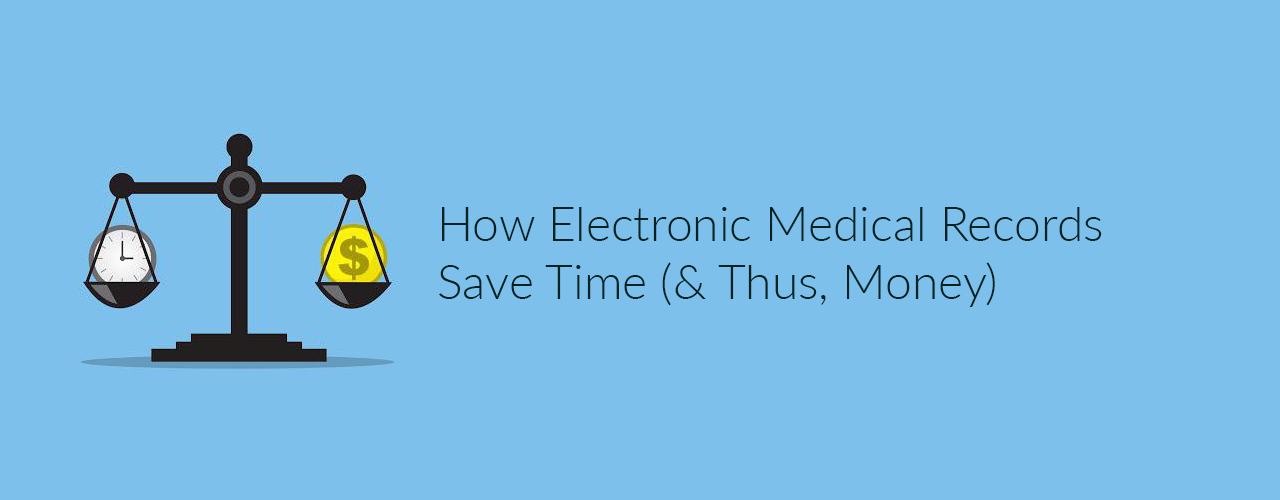I can just about hear you right now. “Really?” you’re probably asking. “Can EMR software really help you save time?”
My answer is a resounding YES.
Sure, we offer an EMR component to SeriousMD but I want to look beyond our software and look at it in a broader point of view.
I will also talk about why EMR software is commonly looked at as a waste of time or something that slows down a physician.
—
How Electronic Medical Records Save Time (and More)

Electronic medical record software is notorious for wasting time… or at least, that’s what most people think. Still, there are those who think otherwise or talk about how they love it as much as peanut butter and jelly.
That’s because despite the lingering negative perceptions, over the years, EMRs have gotten better and have proven to be life-savers for a lot of people.
Wondering how? The following are some ways an EMR can save time now.
Paper records are severely limited and waste a lot of time
First of all, a doctor’s handwriting is certainly a cause for time being wasted. This alone wastes the doctor’s own time when reviewing past notes. If a prescription can’t be read, the pharmacist needs to call the doctor, which also wastes time.
The data on paper is not computable. It’s not shareable with other systems so it’s limited in that sense when the facility upgrades in the future… which is not uncommon, especially nowadays.
Paper is also time-intensive when it needs to be copied, when it’s stored, or when it’s transported. It’s easy to destroy. It’s also almost impossible to know who has seen it.
Having electronic medical records speeds up retrieval of information, demands less time chasing charts, and ensures legible content. This leads to faster treatments and better diagnosis. It also reduces time (and costs) by decreasing paperwork through less duplication of tests and better access to offer coordinated care.
Coordinated billing
When you use external software (especially outdated systems or those that are not integrated) or if you manually record billing on paper, it will really be time-consuming.
EMR software with built-in medical billing (or the ability to integrate with billing software) can save you time and also gives you the ability to coordinate with staff, as well as reduce administrative costs.
Scheduling
Appointment scheduling can be time-consuming when done on paper. Through an EMR, you can easily keep track, schedule a follow-up, set reminders, automatically notify patients, view your schedule for the week in one glance and more.
Templates, shortcuts, pre-saved or pre-filled forms
With an EMR, you normally have access to easy-to-use templates that you can just load and fill in quickly. You can also store and save frequently used information, so when you need it, all you have to do is click/tap on it and you’ll be good to go. Best of all, you can print it out with little effort. Usually, all it needs is just a single tap.
Automatic data backups and security
As your data is electronically stored and backed up, you don’t need to waste time doing it on your own. No server to maintain, no IT team to hire and no worries about security. Best of all, remote retrieval of patient information is easy when it comes to disaster recovery.
—
Research
It’s not hard to guess how the use of EMRs can speed up medical research. Tons of medical data can be computed and analyzed more efficiently than ever thanks to EMRs. The famous EHR4CR Project in Europe has even established the possibility of a platform whereby various EHR utilities and products can work together to speed up clinical research. From clinical trials for new drugs to treatment research, the data offered by EMR systems can be of great benefit to medicine.
—
Key Takeaways
Historically, EMR software has had bad design, which leads to bad experiences like slower practice operation. This leads many a doctor to think that EMR or the technology is the problem and that paper records are still the best choice.
But what if the EMR happened to be designed for the doctor and fit right into his practice? That would make a difference, wouldn’t it?
Things are changing in healthcare IT. Designers now work with more of the doctors’ needs in mind. With the technology we have today, we also have better hardware, secure software and faster, more stable Internet connections. All those will definitely speed up the process even more.
By considering how doctors actually use the software, a simple, user-focused design can go a long way. That’s why you now have actual EMR/EHR software that can help doctors speed up their work, rather than slow them down.
The right EMR software will speed you up once you embrace it. It will also reduce costs, help with diagnosis, and even save lives.
Just try it out with a few patients first. As you add more patients in your database, you’ll start to see the benefits mentioned above.
Have questions about the things mentioned in this article? Take the conversation to social media or just drop us a message. We’d love to start the dialogue! It’s very easy to get started using an EMR, and you might find that sharing your concerns can help you overcome them.

